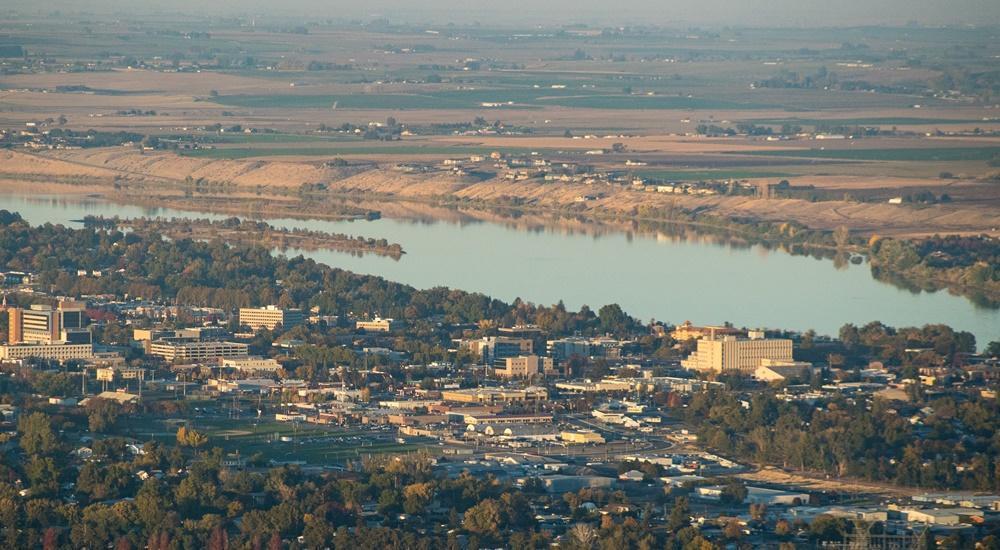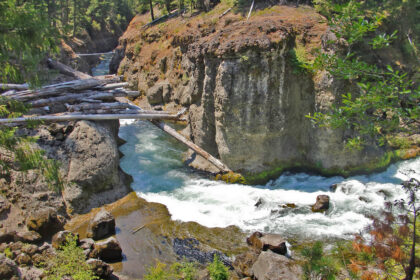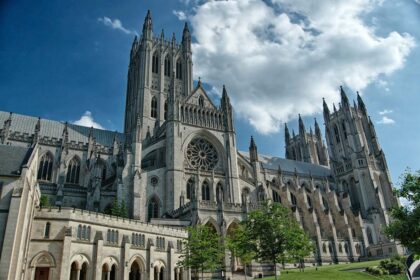Richland is a city in Benton County, Washington, United States. It is located in southeastern Washington state at the confluence of the Yakima and the Columbia Rivers. Take a look below for 20 interesting and obscure facts about Richland, Washington, United States.
1. As of the 2010 census, the city’s population was 48,058, with a 2019 estimate from the Census Bureau putting its population at 58,225.
2. Along with the nearby cities of Pasco and Kennewick, Richland is one of the Tri-Cities, and is home to the Hanford nuclear site.
3. For centuries, the village of Chemna stood at the mouth of the current Yakima River.
4. Today that village site is called Columbia Point. From this village, the Wanapum, Yakama and Walla Walla Indians harvested the salmon runs entering the Yakima River. Captain William Clark of the Lewis and Clark Expedition visited the mouth of the Yakima River on October 17, 1805.
5. In 1904–1905, W.R. Amon and his son Howard purchased 2,300 acres (9 km2) and proposed a town site on the north bank of the Yakima River.
6. Postal authorities approved the designation of this town site as Richland in 1905, naming it for Nelson Rich, a state legislator and land developer.
7. In 1906, the town was registered at the Benton County Courthouse. It was incorporated on April 28, 1910, as a Washington Fourth Class City.
8. Richland was a small farm town until the U.S. Army purchased 640 sq mi (1,660 km2) of land – half the size of Rhode Island – along the Columbia River during World War II, evicting the 300 residents of Richland as well as those of the now vanished towns of White Bluffs and Hanford just upriver. The army turned it into a bedroom community for the workers on its Manhattan Project facility at the nearby Hanford Engineering Works (now the Hanford site).
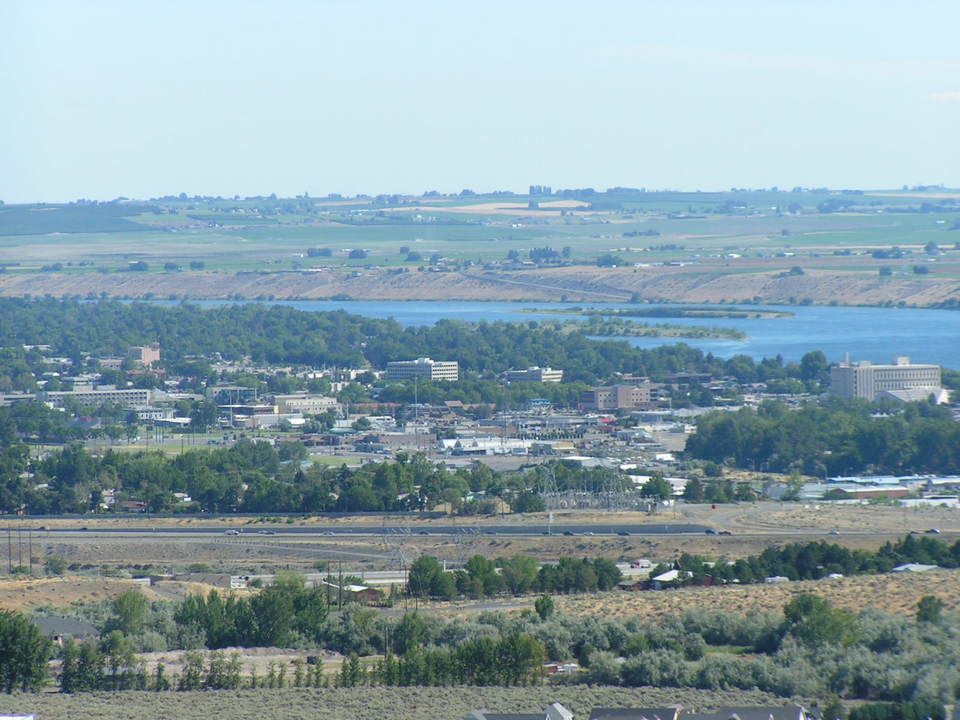
9. The population increased from 300 in July and August 1943 to 25,000 by the end of World War II in August 1945. All land and buildings were owned by the government. Housing was assigned to residents and token rent was collected; families were assigned to houses or duplexes; single people were placed in apartments or barracks. Everything necessary was provided, from free bus service to light bulbs, and trees were planted in people’s yards by the government.
10. Much of the city was planned by Spokane architect Gustav Albin Pherson and overseen by the Army Corps of Engineers.
11. While there were dormitories and barracks built at the time, prefabricated duplexes and single family homes are all that survive today. Because homes were allocated based on family size and need, there were a number of floorplans available. These were each identified by a letter of the alphabet, and so came to be known as alphabet houses.
12. In 1954 Harold Orlando Monson was elected the first mayor of Richland and traveled to Washington, D.C. to negotiate increased rights (such as private home ownership) for citizens in military cities across the country.
13. Richland’s link to the Army Engineers is suggested by its street nomenclature; many of the streets are named after famous engineers. The main street (George Washington Way) is named after the first president, who was a surveyor; Stevens Drive is named after John Frank Stevens, chief engineer of the Panama Canal and Stevens Pass; Goethals Drive is named after George W. Goethals, designer of the Panama Canal; and Thayer Drive is named after Sylvanus Thayer, superintendent of West Point and later founder of the Thayer School of Engineering at Dartmouth College. The rule is that if alphabet houses reside on a given street, it is named either after an engineer or a type of tree.
14. With the end of the war, the Hanford workers’ camp, originally located fifteen miles (24 km) north of Richland at the old Hanford town site, was closed down. Although many of the workers moved away as the war effort wound down, some of them moved to Richland, offsetting the depopulation that might otherwise have occurred.
15. Fears that the Soviet Union’s intentions were aggressive set off the Cold War in 1947. The capacity to produce plutonium was increased beginning in 1947. When the Soviet Union developed and tested their first nuclear weapon in 1949, the U.S. nuclear program was reinvigorated.
16. A second post-WW II expansion began in 1950 as a result of the war in Korea. Richland’s Cold War construction boom resulted in Richland’s population growing to 27,000 people by 1952.
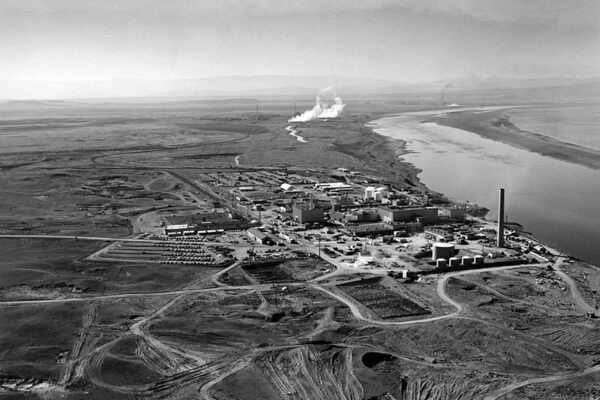
17. Many of these people lived in a construction camp of trailers located in what is now north Richland. With time, these trailers were vacated and the core city grew. Others lived at Camp Columbia near Horn Rapids until the camp was closed in 1950. In 2005 several dozen houses built in the northern part of the core city during this boom were added to the National Register of Historic Places as the Gold Coast Historic District.
18. The government got out of the landlord business in 1957 when the real estate was sold to the residents. Most of the people lived in duplexes; senior tenants were given the option to purchase the building; junior tenants were given the option to purchase lots in a newly platted area of north Richland. Richland was incorporated in 1958 as a chartered First Class City, an open self-governed city.
19. As part of the transition, large areas of undeveloped land became city property. Richland’s financial dependency on the federal Hanford facility changed little at this time because Hanford’s mission as a weapons materials production site continued during the Cold War years.
20. At some point, documents and photographs of the Hanford military facilities became declassified by the U.S. government. Those digitized records are considered to be in the public domain, and are hosted on the online Hanford Document Retrieval System. Historical events, such as a visit to the property by President Richard Nixon, are also stored on the database.

